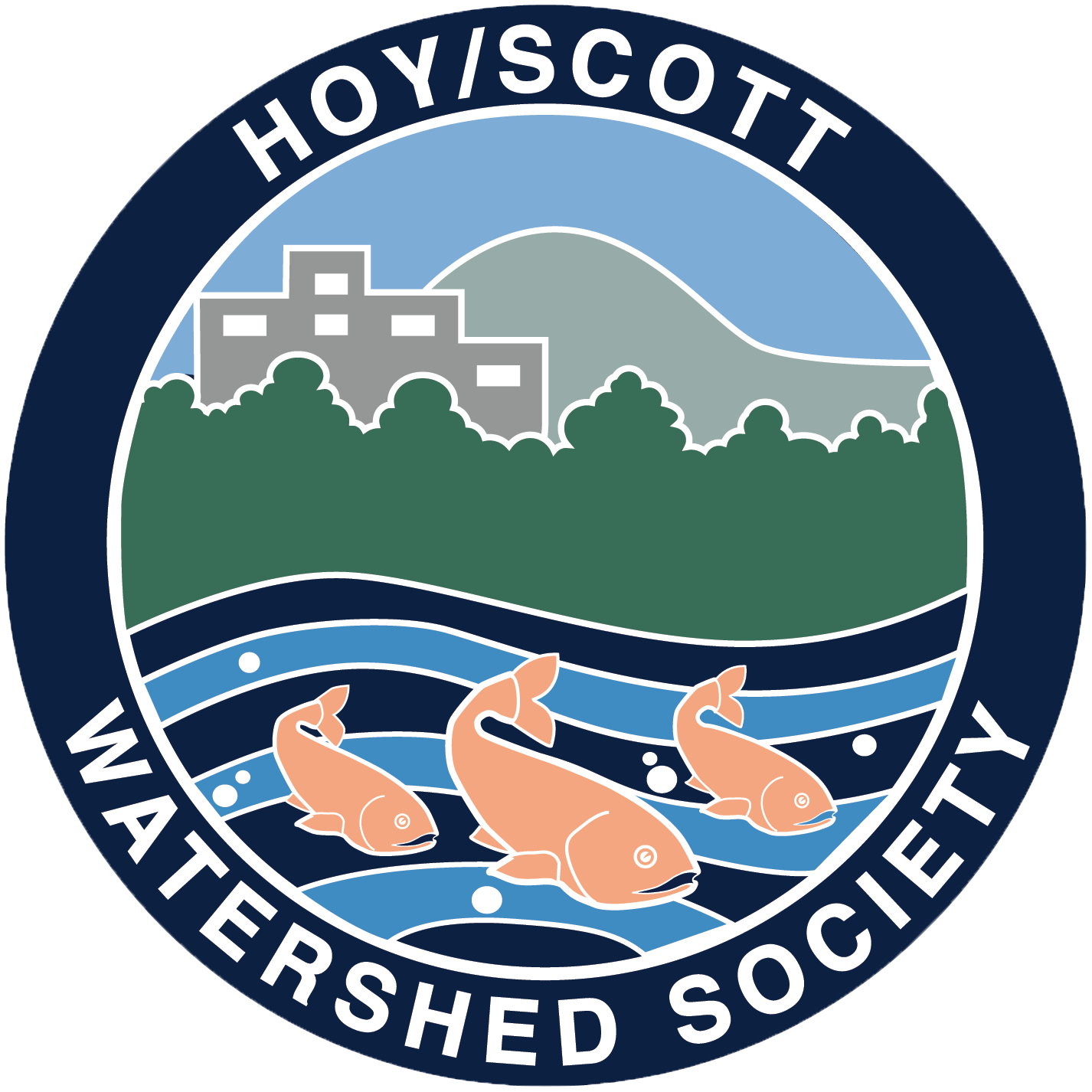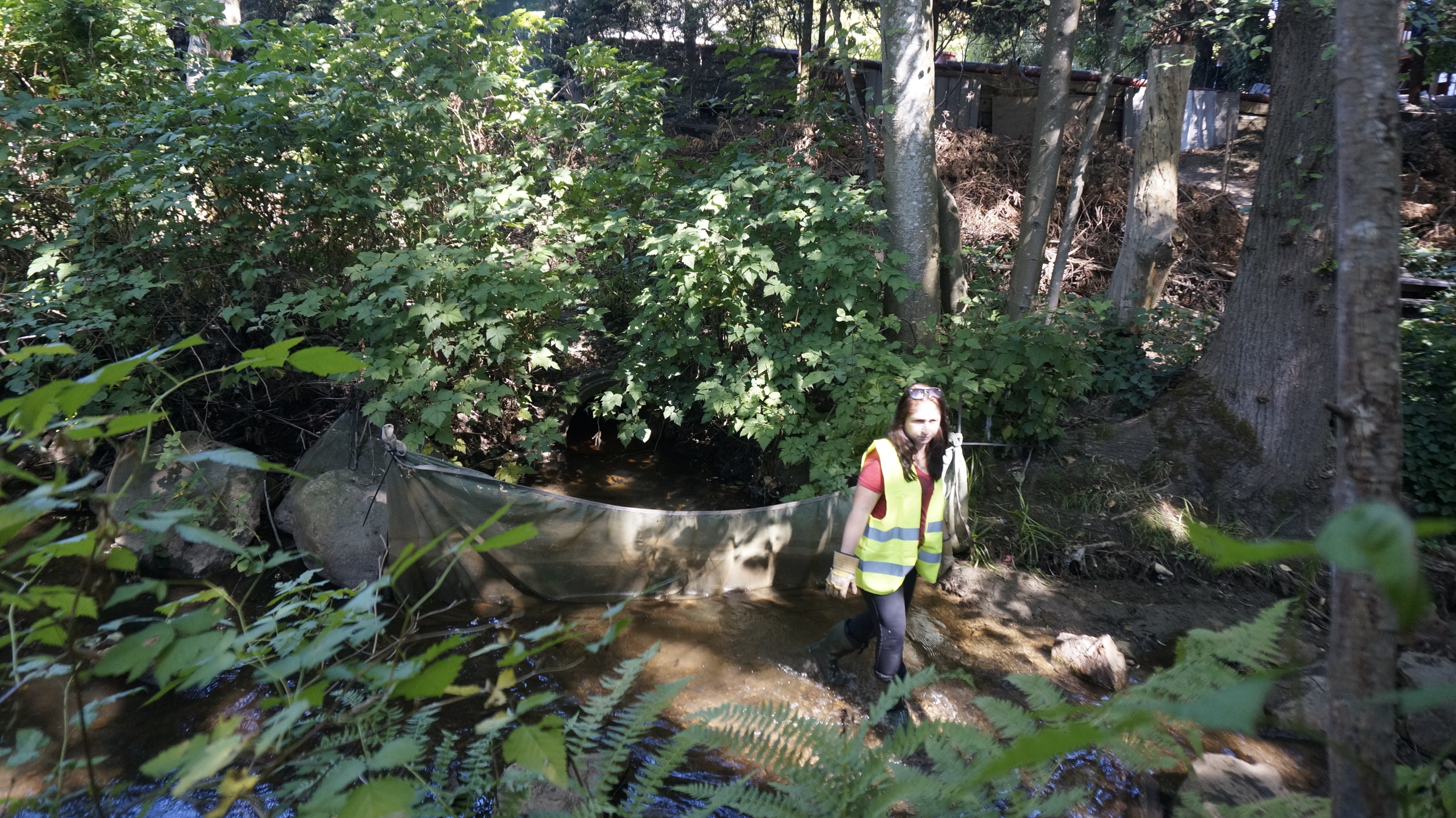Children paint a mural with the Coquitlam River Watershed Roundtable to welcome home the salmon.
The chum salmon started arriving back in Hoy Creek around mid-October, and on October 25th the community of the Tri-Cities came out to celebrate at the annual Salmon Come Home festival put on by the Hoy-Scott Watershed Society and the City of Coquitlam. The festival is environmentally-themed and designed to promote public awareness about conservation and spawning salmon that migrate back to Coquitlam.
The weather was optimal and approximately 2200 people passed through to get a glimpse of spawning chum salmon in Hoy Creek and take in the activities set up around Hoy Creek Hatchery. The event was held during a dry weather spell so the chum numbers could have been higher for viewing, but people were able to see one or two throughout the day. The Society also had several large chum in the hatchery's Capilano trough for closer viewing, as well as several on-land demos with live salmon where held as Maurice Coulter-Boisvert from the Department of Fisheries answered questions.
Cookies made by Melanie Lee
There were many other educational displays and activities for the entire family. Salmon educator, Chris Hamming provided an ongoing tutorial about the salmon over by the rearing pond, and other participating groups who provided interesting activities and education were Burke Mountain Naturalists; City of Coquitlam - Bad Seed, Solid Waste and Recycling, Urban Wildlife, and Water Conservation; Coquitlam River Watershed Roundtable; Coquitlam Riverwatch; Freshwater Fisheries Society of BC; Friends of DeBoville Slough; Hoy/Scott Watershed Society; Hyde Creek Watershed Society; Kintec; Maple Creek Streamkeepers; South Coast Conservation Program; Vancity Pinetree Branch; Fisheries and Oceans Canada; and the Port Moody Ecological Society.
Jay Peachy serves up Spirit Bear coffee while Etienne Siew performs.
The day would not have had such a festive-feel if it were not for the music! The Canadian Sound Therapy Arts Society's Wild Salmon Creative Café were out providing piping hot Spirit Bear Coffee, and entertainment by The Bird and the Lion, Etienne Siew, and a DJ.
The four-hour event had kids crafts, costume parade and story telling with Angela Brown, as well as a prize fish pond provided by Kintec. Children enjoyed painting a mural with the Coquitlam River Watershed Roundtable.
Everyone oohed and awed over the salmon cookies made by HSWS member, Melanie Lee, with all sales from the cookies going toward the Society.
Hoy Creek Hatchery manager Rodney Lee holds up a salmon during the on land demonstrations led by the Department of Fisheries
Hoy-Scott Watershed Society would like to thank all those that made the event possible! A big thank you to our partners at the City of Coquitlam, in particular Caresse Selk. Thanks also to CKPM FM Tri-City Radio; the many volunteers who lent a hand; and all the community groups that took part.
Hoy-Scott Watershed Society has been in operation since 2002 and is a volunteer run society that operates a small salmon hatchery, and conducts a salmon enhancement program in partnership with the City of Coquitlam, with technical expertise from the Department of Fisheries and Oceans Canada. The Society also works to restore and maintain the riparian habitat in the watershed by removing invasive plant species and re-planting with native plant species. Learn more about the Society at
HSWS founding member and salmon educator, Chris Hamming
Approximately 2200 came through to enjoy SALMON COME HOME at Hoy Creek Hatchery on Hoy Trail


















